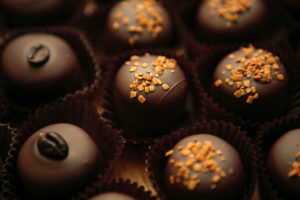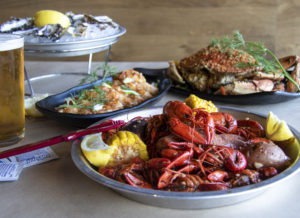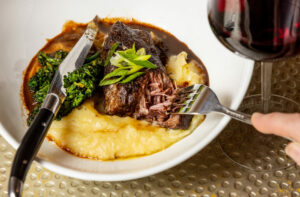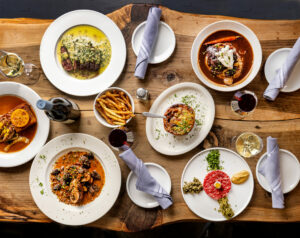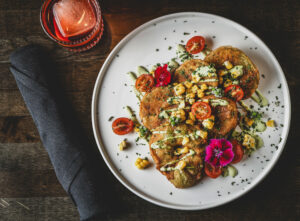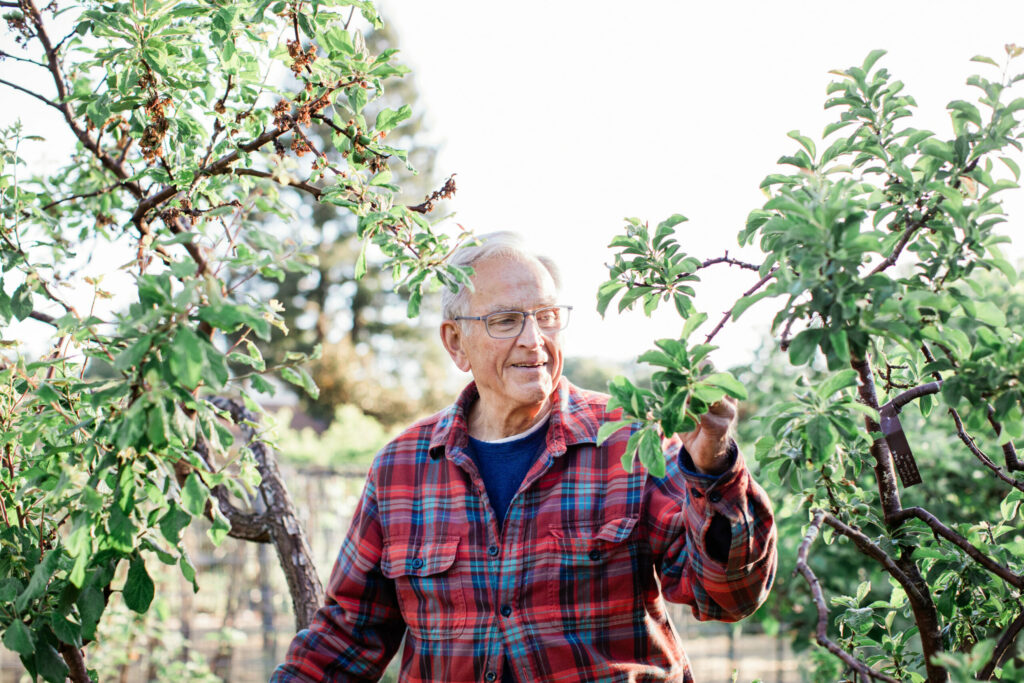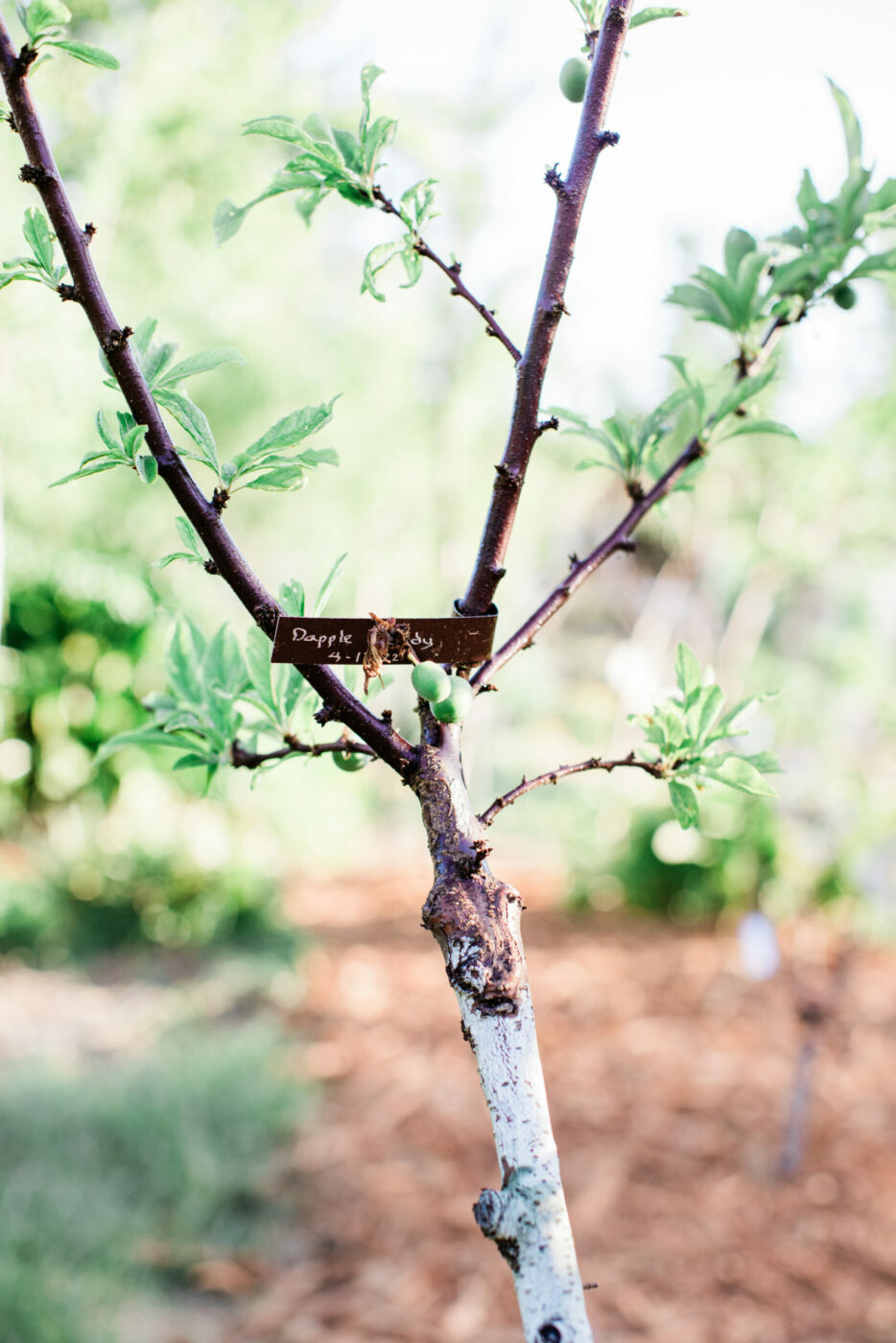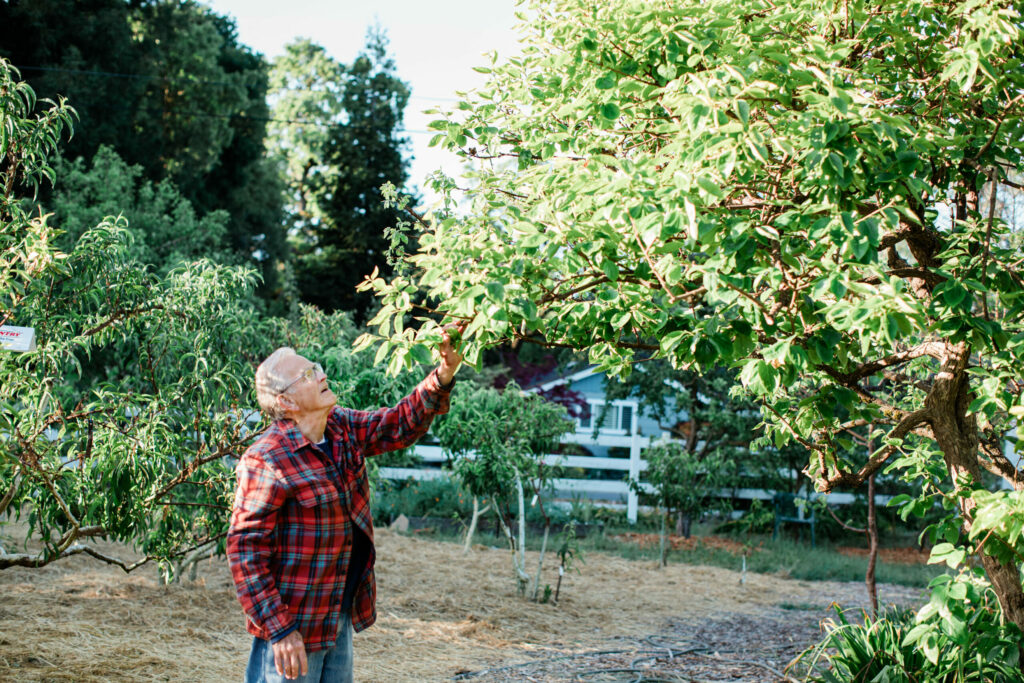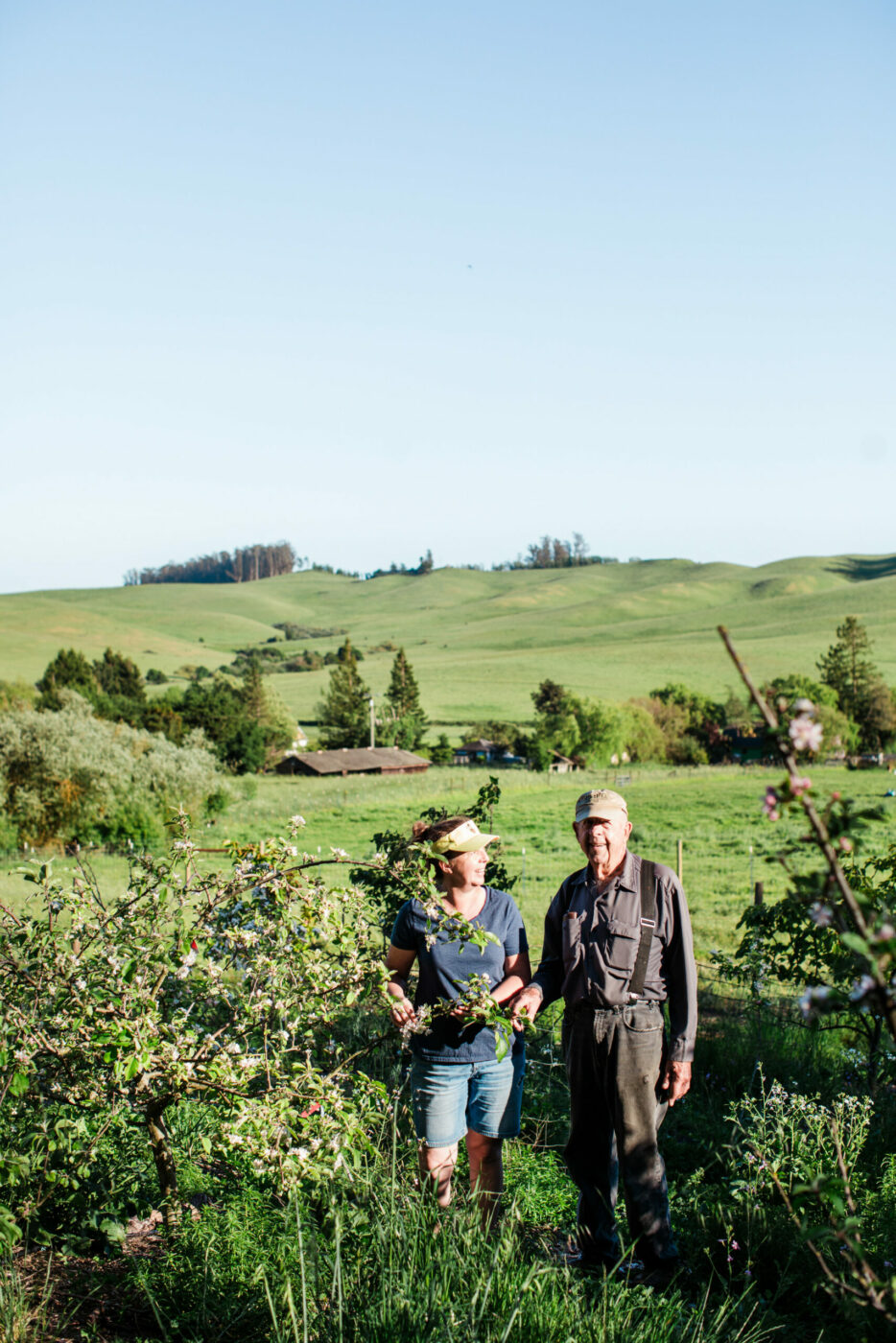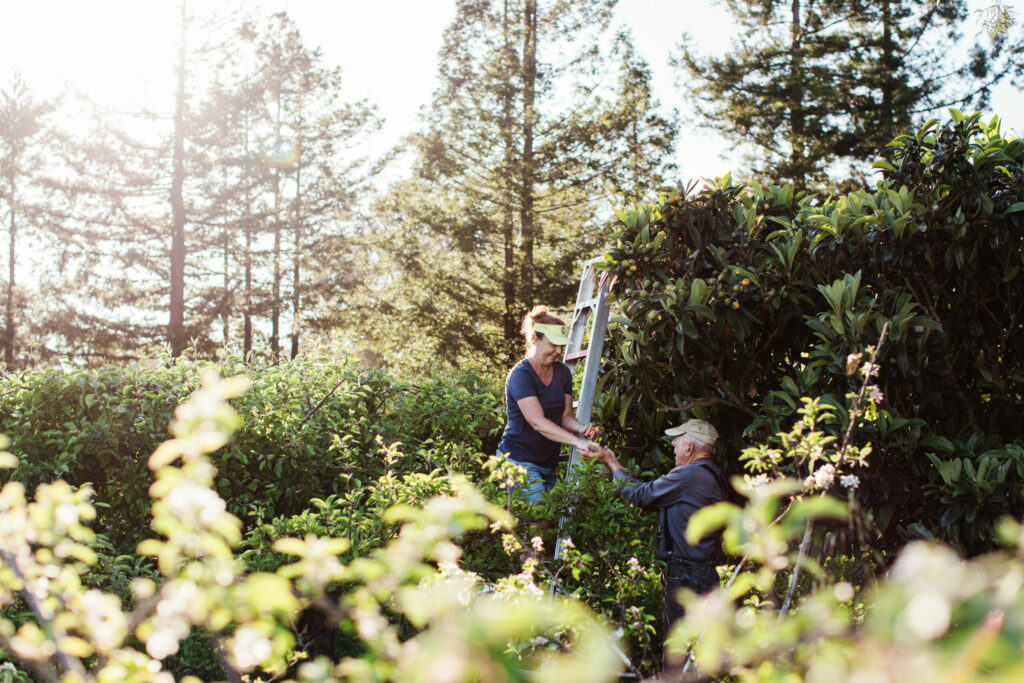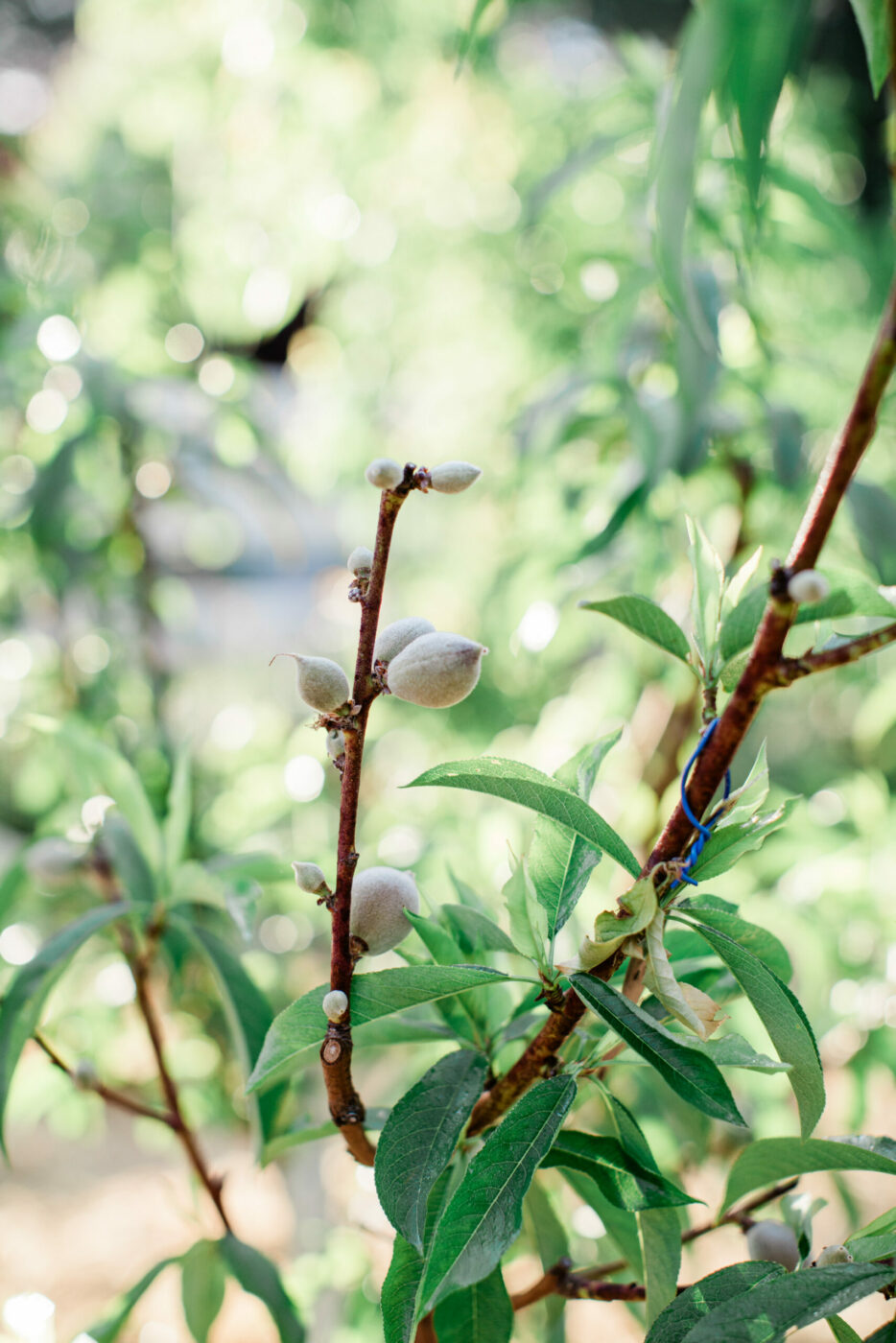
A possible descendant of the O’Henry peach, it’s an old-fashioned sweet peach with strong acid balance and excellent flavor, with the taste-test ribbons to prove it. Over the years, Ulmer has given away countless fruits, preserves and cuttings, and people have grown their own Ulmer Compost Peach trees all over Northern California and beyond. It’s the dream of any rare fruit grower — not only to graft, prune and grow unique delicacies to eat and share with others, but to maybe one day grow something that has never been grown before.
“Rare fruit growers have to be farmers, detectives, canners — and, most importantly, year-round consumers of what they grow,” says Ulmer, a retired ophthalmologist who grew up in Mississippi, the son of a Methodist preacher. Before he left the South, he had grown more than 160 varieties of plums.
Standing in the middle of his densely planted 1-acre Sebastopol orchard, a former horse corral he calls “Ulmer’s Acre,” he is surrounded by more than 400 varieties of fruit, including hundreds of different apples, pears, peaches, plums, apricots, cherries, blueberries, kumquats, oranges, lemons, limes, pineapple guava, kiwis and even mayhaw — a hawthorn berry famous for the delicious jelly it makes.
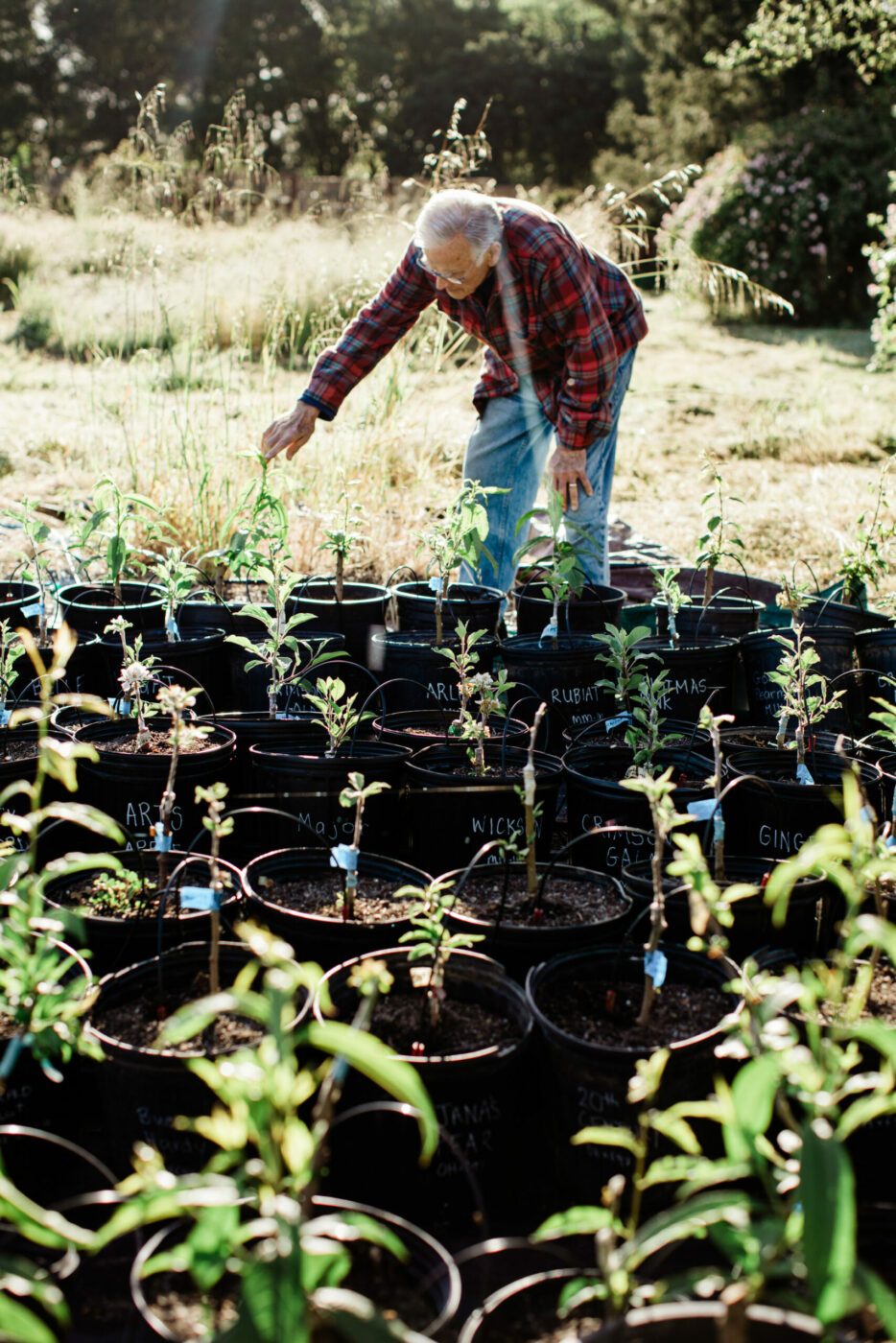
This time of year, during the magical bloom that is springtime in Sonoma County, as bees are buzzing and longer sunny days emerge from the cover of rain, vibrant orchards all over the region are growing unusual varieties of fruit — odd, juicy specimens you’ll likely never see in a supermarket or even at a farmers market.
“Sometimes they’re just not a commercially viable cultivar,” says Rachel Spaeth, a research horticulturist who studies the genetic makeup of rare fruits and is past president of the Redwood Empire chapter of the California Rare Fruit Growers (CRFG). “Meaning maybe they have skin blemishes or imperfections, or they ripen unevenly and are not suitable for the commercial market. But for a home grower, they could be fantastic.”
Among the 60 fruit trees Spaeth grows in pots at her southwest Santa Rosa home, one is loaded with 17 different varieties of apples. She doesn’t get a ton of apples on any single branch, but it makes for a deliciously long season, supplying fresh apples from the end of July through December. Along with a jambolan tree native to India, Spaeth also has a “fruit salad tree” with apricots, almonds, peaches, cherries, nectarines, plums and prunes all on one tree, and what she calls a “Frankencitrus” tree, loaded with an array of lemon, lime, naval orange, blood orange, mandarin, pomelo and more.
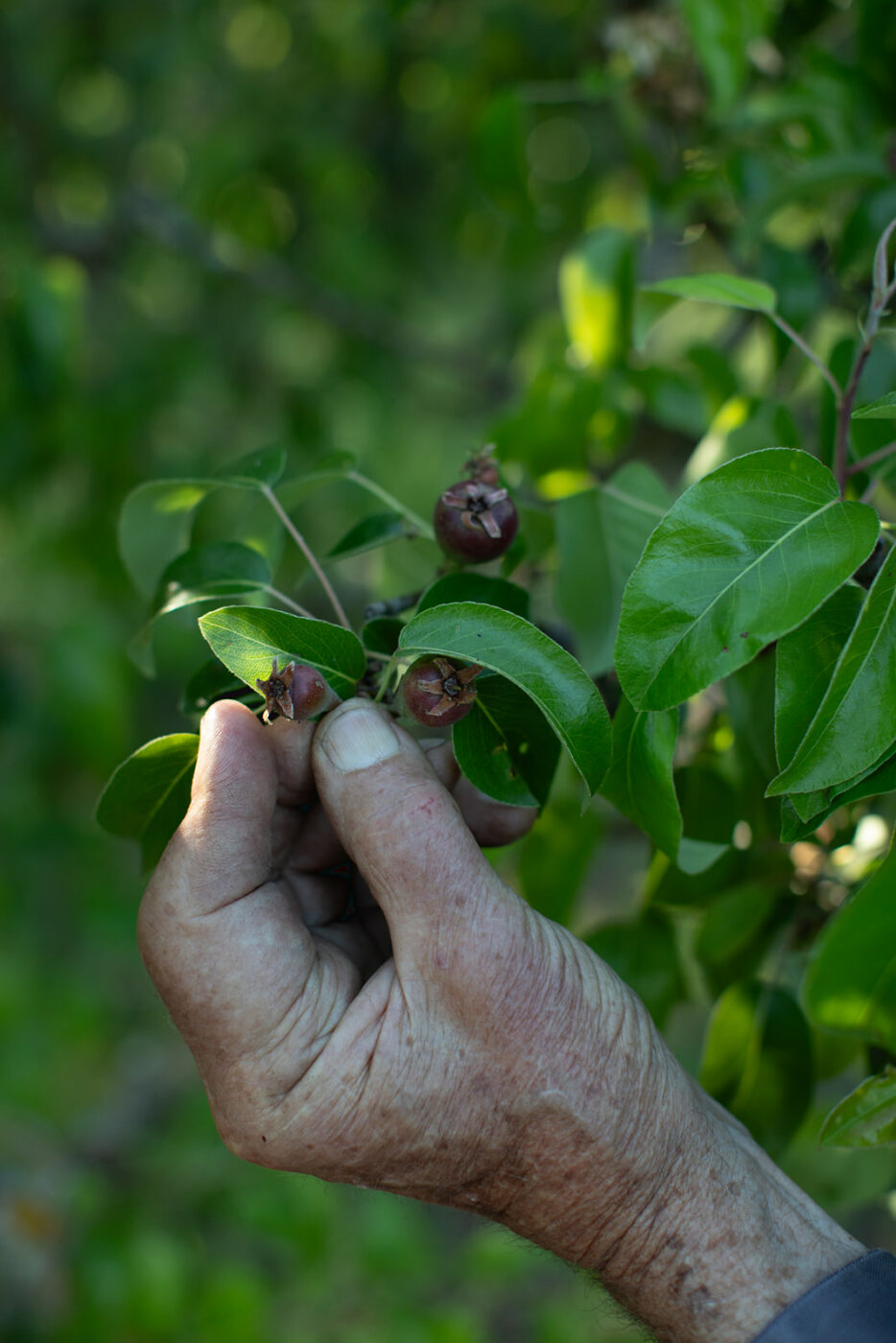
Standing on the shoulders of famed local botanist Luther Burbank and other fruit breeders like Ferndale’s Albert Etter and Sebastopol’s Will Silva, growers like Ulmer, Spaeth and the tight-knit band of intrepid farmers at the Redwood Empire chapter of the California Rare Fruit Growers are not only obsessed with cultivating hard-to-grow fruits but also sharing their knowledge with anyone who is interested.
This type of community is exactly what Phil Pieri was looking for 27 years ago when he planted a few apple and plum trees on his Petaluma farm, not long after retiring from a career as a telephone equipment installer. “They were a very knowledgeable group of people, who were not commercial, and were willing and more than happy to show you how to do this and do that, and let you know what you can do and what you really probably shouldn’t do,” says Pieri.
Now, along with Ulmer, he’s one of the wise old sages of the CRFG, offering everything from grafting tips and free scions to tastings and tours of his property. Throughout the year, the local Redwood Chapter offers scion exchanges, tastings and clinics.
Pieri’s advice to newcomers: “Ask questions — be curious, be damn curious.”
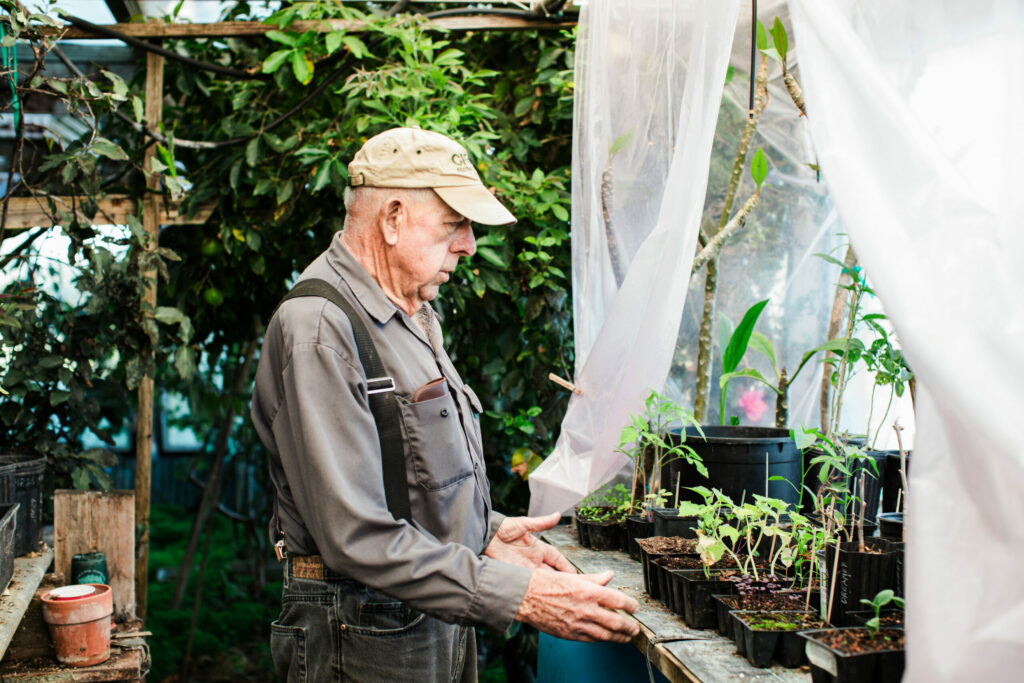
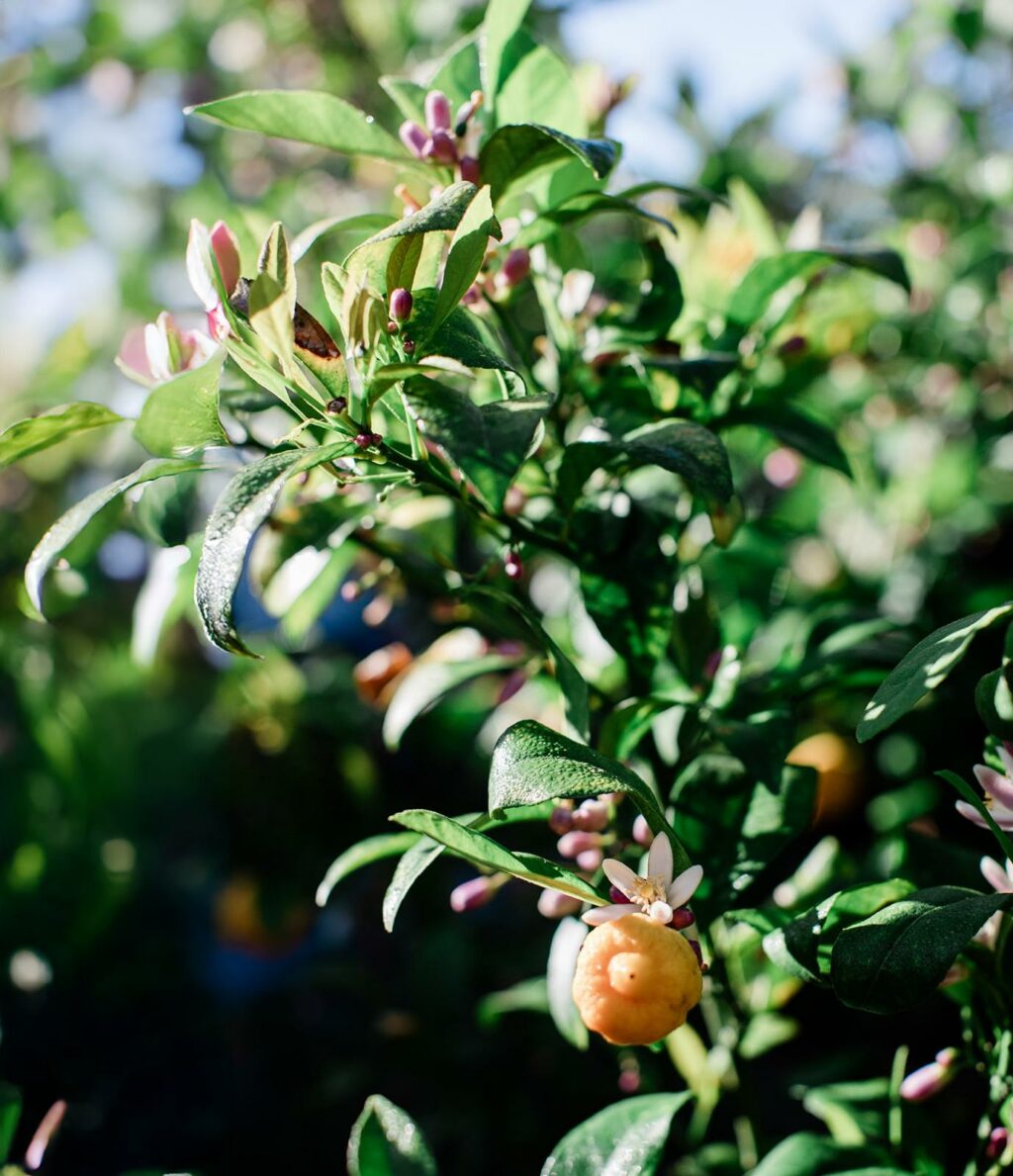
Just watching newbies come to a rare fruit tasting for the first time can be nostalgic. “We get people who will come to our tastings, and you can see the ‘aha’ moment after they walk in the door. They’re like, ‘Wow, you have 85 different kinds of apples in here? I didn’t even know that many existed,” says Spaeth, curator of the Prunus collection of fruit and nut trees for the USDA Agricultural Research Service in Davis. After serving as local CRFG event coordinator, secretary, and president, she hardly ever misses a tasting or scion exchange.
“And we’re like, ‘Oh, actually, there’s more like 5,000 kinds of apples.’ And the wheels just start turning. Seeing that sense of discovery and wonder when people first find us helps me relive my own first sense of discovery,” says Spaeth.
On a springtime walk through his Petaluma orchard and greenhouse, Pieri checks on his 200-plus trees, all in different stages of bloom and fruition. Sprinkled among varieties of plums, apples, and peaches are more unique fruits like cherimoya, known for an outer skin in the pattern of an alligator, and the rare Lilly Pilly tree, native to Australia, that bears small, cherry-like fruits. Among his 12 varieties of dragonfruit, there’s American Graffiti and Physical Graffiti, borrowing names from cinema and rock history. A babaco papaya tree, from the mountains in Ecuador, is especially cold tolerant. He also grows tropical white guava, caperberries, black Tartarian cherries, and white sapote.
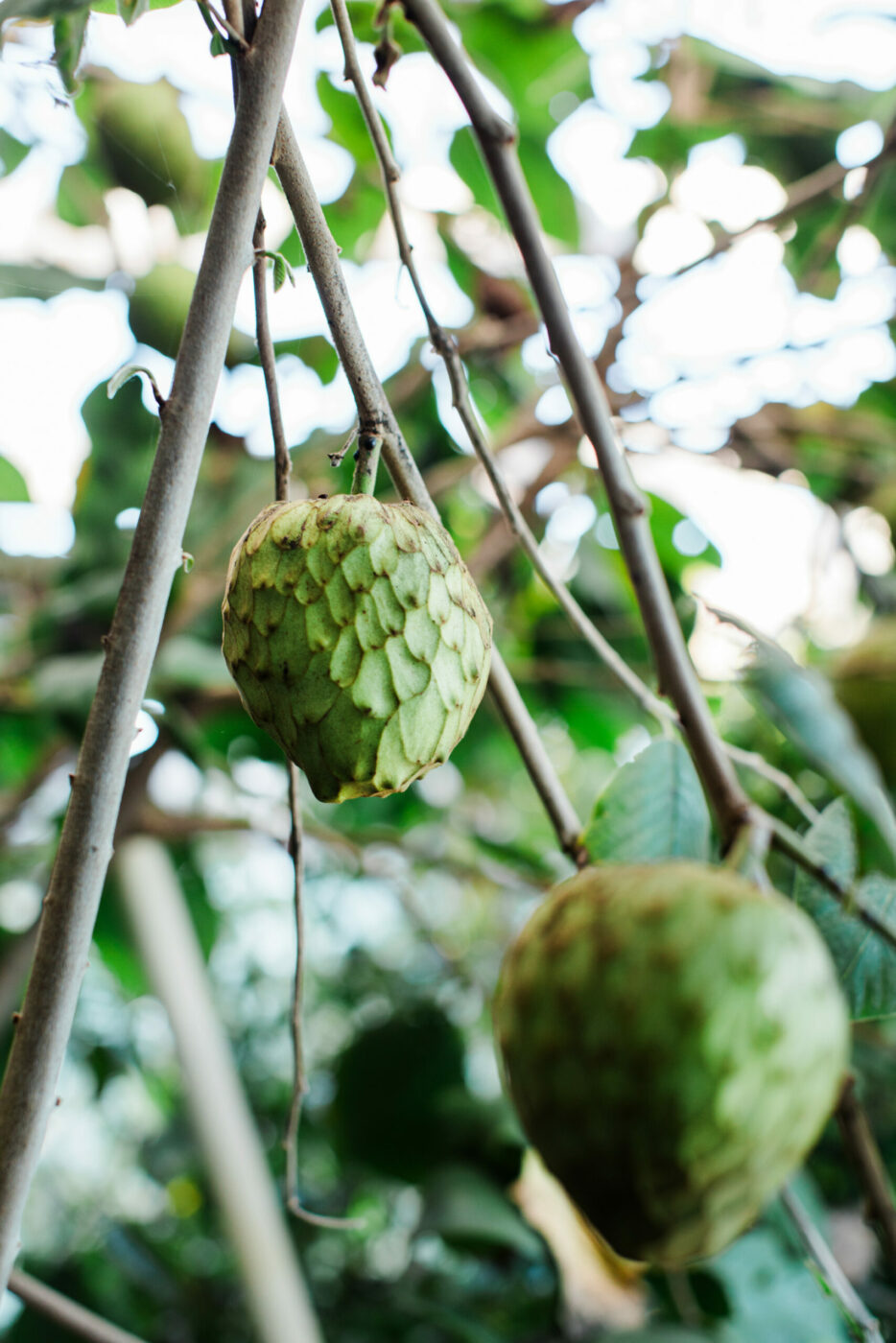
It’s not uncommon for CRFG farmers to suffer from what Spaeth calls “zone denial,” a condition suffered by green-thumb optimists who refuse to admit they don’t live in the tropics and can’t grow bananas in Northern California (a feat accomplished by several Northern California growers). They also go by “zone deniers” for short.
Pieri freely admits to being one of these zone deniers, growing many types of fruits which technically shouldn’t thrive here but do under his careful care — and with the help of several greenhouses. But beyond the challenge of nurturing finicky plants, there’s something else this passion offers to keep him curious and alive with the thrill of the chase.
Sometimes it’s the wonder of rescuing a rare plant that might otherwise be lost to history and time. More than a decade ago, Pieri and a few other comrades in fruit arrived at the scene of a single Burbank avocado tree on a lonely Santa Rosa street corner that had just been chopped down by construction crews making room for a new office building.
“We found three avocados on the ground,” Pieri says. “They weren’t edible, but the seeds were there.”
After carefully germinating the seeds, he now has a healthy specimen of that lost tree growing on his Petaluma farm.
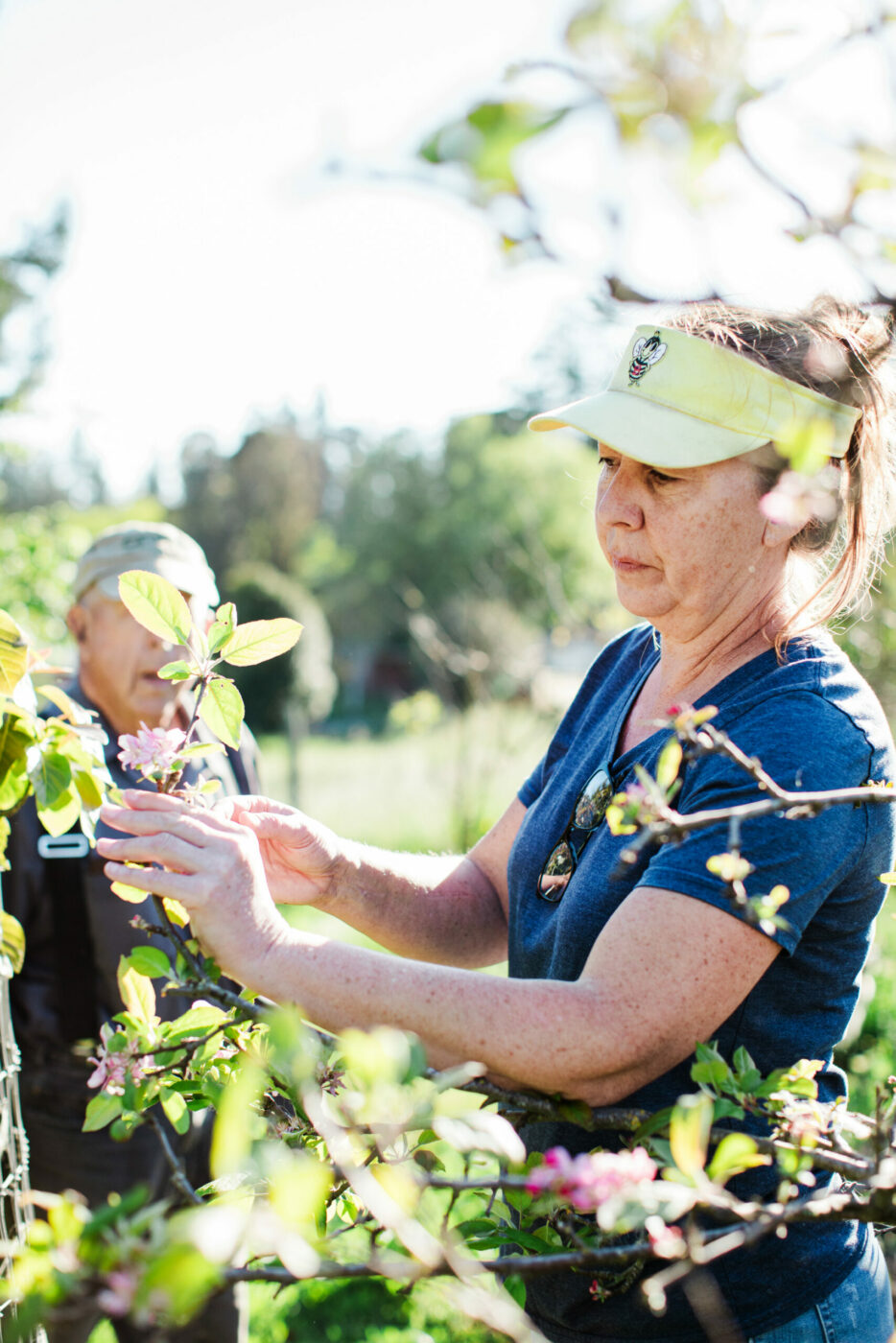
The payoff is not always in the fruit. In this case, Pieri says he’s not particularly fond of the pulpy, striated Burbank avocado flesh, compared to the texture of other varieties. But there’s comfort in knowing he saved something worth saving. He’s reminded of this each time someone asks if they can have a scion from the tree.
“I want it to go on forever,” he says, adding he only knows of a few Burbank avocado trees anywhere in the region.
Like Pieri, research horticulturalist Rachel Spaeth enjoys heading out on a good Indiana Jones-style plant adventure. Growing up in Emporium, Pennsylvania, she learned by necessity to grow and harvest fruit at an early age. Her family didn’t have a lot of money, so to get by, they ate dried apples and canned apple sauce, spiced apple rings, blueberry pie filling and pickles. When she moved to California on a whim with a bunch of friends, she was blown away by the abundance of varieties of fruit.
It didn’t take long until she stumbled upon the delicious “pineapple notes” of the green-yellow Hawaii apple, patented by Sebastopol breeder Will Silva. Wanting to find out more about Silva and his work, she set out with several other gumshoes from the rare fruit growers group to track down one of Silva’s lesser-known varieties.
“There was this other apple called ‘Red Scarlet’ that we kept hearing about,” she says. “We knew that we had patent information for it, but we just couldn’t find it.”
Setting out on a mission they called “The Hunt for Red Scarlet,” they showed up unannounced at “random, weird orchards and talked to old processors, just trying to pick the brains of anybody who might have been around and had some overlap in time and space with Silva.”
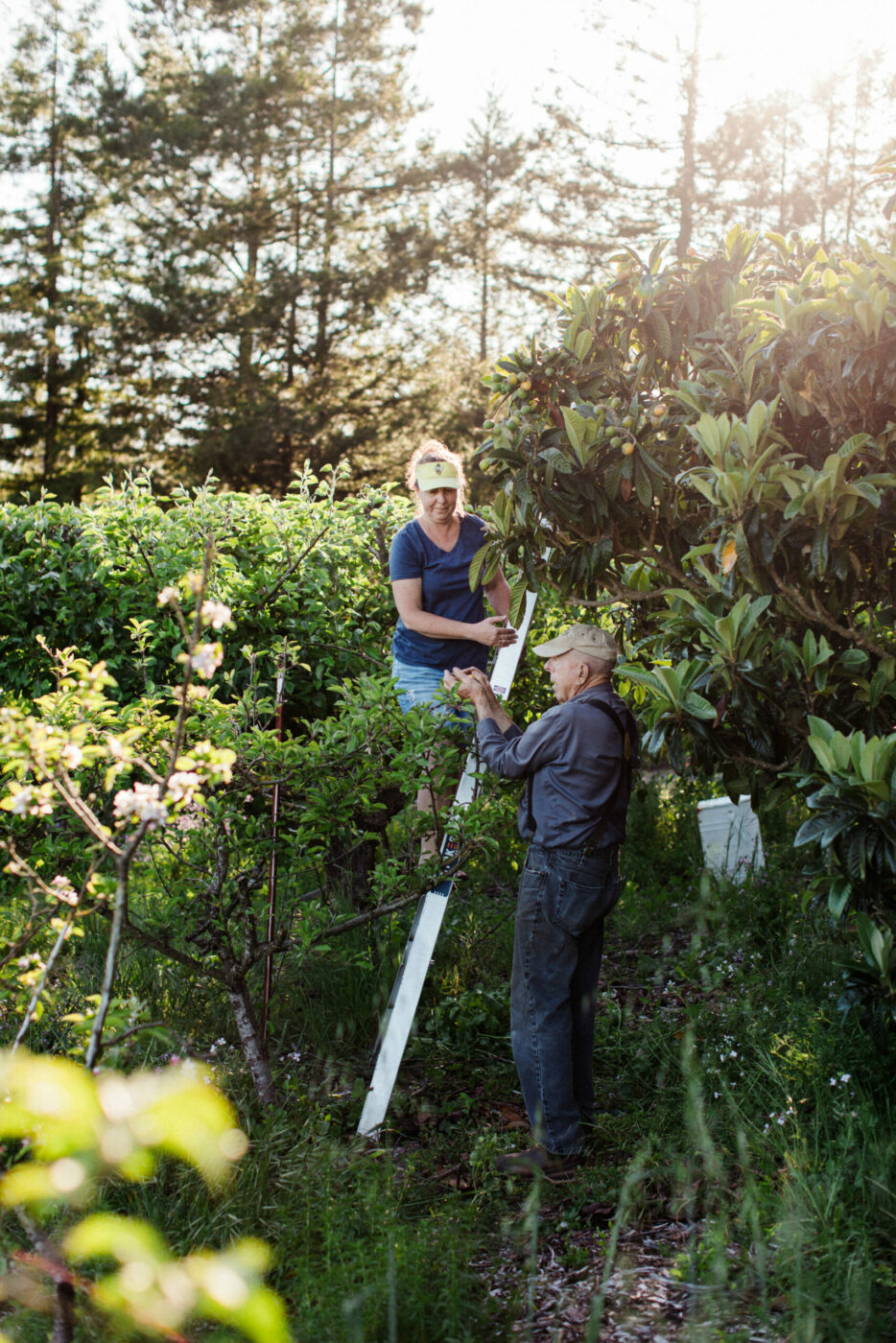
It turns out that one of the volunteers at Luther Burbank Gardens, where Spaeth worked as curator for 15 years, had purchased a Red Scarlet apple directly from Silva in the early 1950s, and the mature tree was still growing in her yard. To verify, the team looked at the parent apples listed on the patent — Red Bell Flower and Baldwin — eventually tracking down living samples of those parent trees at a heritage apple orchard in Washington. That orchard agreed to send leaf samples from both parents, which Spaeth sent along with leaf samples from the volunteer’s tree to researchers at UC Davis. “They sequenced the genomes and we determined that, yes, this is probably Red Scarlet,” says Spaeth.
Finally, they had their match. For Ulmer, it’s the hunt for obscure varieties and the mission to save them from the brink of extinction that keeps his detective skills in tune. He spends most of his time on his property looking after trees like a rare Winioska-Saska pear from Poland or a mystery tree he grew from a street-scavenged avocado seed. It came from a CRFG member who found an ancient, two-story avocado tree growing near an apartment complex on Sonoma Avenue in Santa Rosa. “He climbed that tree in the middle of the night to harvest the fruit,” Ulmer remembers. After tasting the avocado, Ulmer liked it so much he eventually grew his own tree from those same seeds — but he still doesn’t know exactly what kind of avocado it might be.
The ever-curious Ulmer makes time to help other farmers with their own fruit mysteries. His latest case is a mysterious plum tree in the East Bay. The owner’s grandfather grew it in Menlo Park in the 1930s. Now, the tree is dying, and the grandson wants to determine the variety of plum to try to preserve it. Armed with photos and bud grafts from the old tree, Ulmer is trying to narrow down possibilities until he can zero in on a match. DNA testing is an option, he says, but it’s expensive.
For now, he has no idea how long it might take, but he’s willing to try. “I’m retired, I have all the time in the world,” Ulmer says.
After all these years, is he still obsessed? “Oh god yes,” he says, laughing, his avuncular Southern accent pausing for effect. “Look at me — I’m a variety collector. I want to taste them all. I want to grow them and see how they grow, and I want to share them. It’s a rare individual who doesn’t want to share what they’ve grown.”




